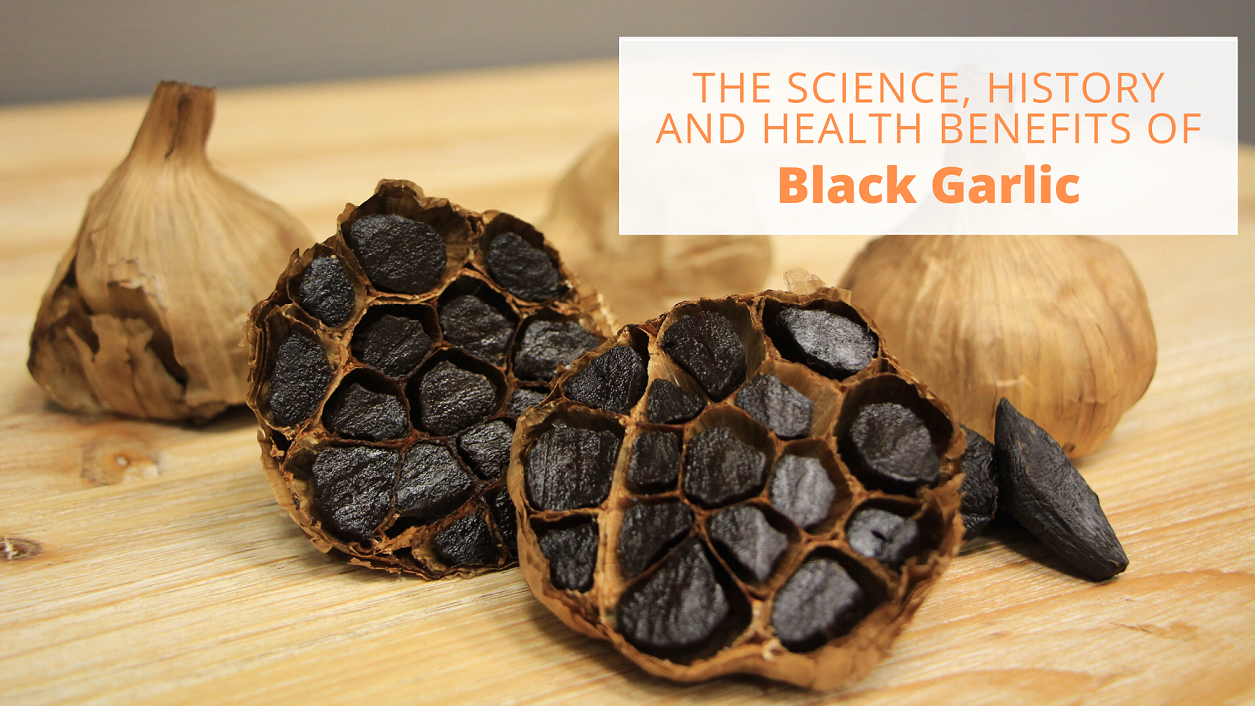The science, history and health benefits of black garlic | Food Science Corner
Last Updated on September 30, 2023
The word “garlic” alone can cause people to feel a variety of emotions.
Garlic (Allium Sativum), often known as stinking rose, may make you grimace, or it may make your mouth water. Personally, I find it to be highly delectable, since without the aid of garlic, whether black or white, I couldn’t picture creating all the perfect tastes in my cooking.
History of Garlic
Garlic was first found near Central Asia, then it spread to Middle East and North Africa, then to Europe around 3000 BC and used as traditional medicine. As there were no antibiotics or medicines in use during this time garlic was utilized as medication to treat several epidemics including dysentery and influenza. It was also used to treat insect bites.
Presently, garlic is said to have a variety of health benefits, including preventing cancer, regulating blood sugar levels, and protecting the heart. Currently, 76% of the world’s garlic requirements are met by China.
Chemistry of Garlic
Most of garlic’s unique flavors come from compounds containing sulfur, such as allicin and alliin.
Allicin acts as garlic’s natural defense and antimicrobial agent. Other plants in the allium family such as leeks and onions also contain these molecules, but in lower concentrations and hence, they are less pungent. When the plant cells in the garlic bulb break down, as with chopping, grinding, or chewing, the sulfur-containing compounds and enzymes that break them down come into contact with each other and react. When garlic is cooked before it’s cut, that reaction does not occur, because the heat breaks down the enzyme. This results in a milder garlic flavor.
Garlic also differs from other members of the allium family in that garlic contains more long chain fructose than other members of the family. Slow cooking breaks down the fructose chains into sugar molecules, resulting in a mellow sweet flavor. This greater proportion of fruit sugars is also responsible for why garlic burns more easily than onions.
Like in any vegetable, there is a change in the textures and flavors of garlic when it is cooked.
Raw garlic has a crunch to it, whereas cooked, fermented, or pickled garlic has a softer texture. Flavor of raw garlic is pungent and sulphury while cooked garlic is mildly savory, creamy, and nutty. When garlic is pickled, the texture is slightly crunchy, and the flavor can be pungent as well as a little sweet.
Garlic contains vitamins B, C and K and minerals such as manganese, calcium, copper, zinc, phosphorous, potassium and iron. The compounds in garlic have such low bioavailability that the body does not retain them for a long time.
Moreover, cooking can reduce the vitamin content especially vitamin C. Vitamin B and vitamin C are water soluble and can easily be destroyed by cooking, while vitamin K is oil soluble, so cooking does not affect it. Minerals cannot be broken down, but boiling may release manganese, copper, calcium and so on.
Storage of Garlic
An entire bulb of garlic can be stored for 3-5 months in a cool dark place at room temperature; refrigeration may cause sprouts to grow. Mold can grow on garlic in presence of light and moisture. Whole bulbs can also be wrapped in aluminium or similar food wrappers and frozen for a longer period. Peeled and chopped garlic can stay in the fridge for 7 days and in the freezer for up to 12 months.
Processed garlic such as frozen garlic cloves, dried garlic, powdered or minced garlic and those in jars such as garlic paste, or pickle have specific expiration dates printed, but generally last 3 months in the fridge. They last longer as preservatives such as citric acid are added to them. Homemade processed garlic lasts about 2-3 weeks in the fridge.
Spoiled garlic looks yellowish brown, and green roots start growing from the center. The smell is sour, and the texture is soft and mushy.
Fermentation of Garlic
There are two ways fermented garlic is used, one is a mildly fermented garlic in pickles and the other is black garlic. Black garlic is exactly how the name sounds, dark black in color. The textures and sensory profile of black garlic are altered, and it resembles nothing like raw white garlic.
Black Garlic
Initially black garlic was made in Korea when garlic was left to slowly oxidize and ferment in a rice cooker for several weeks with a temperature of 140°F (60°C). After about 60 days in high humidity (85%), black cloves with sticky, dried date like texture and a flavor resembling caramel developed. Bacteria that are capable of fermentation and have strong heat tolerance are present in garlic and might be important for the development of black garlic. Despite looking roasted, black garlic is not burned nor is any color or preservative added to it.
Black garlic has fewer allicin compounds and not the same strong smell of garlic. It lacks aroma but has a unique flavor profile of umami with a molasses sweetness, like in balsamic vinegar. It is a combination of sweet sour and even some smoky elements.
How does garlic turn black?
The heat causes the carbohydrates and amino acids in food to decompose into melanoidins. This is known as the Maillard reaction. Melanoidins are the compounds which give brown or black color to the food. These compounds are rich in glucose and fructose, which explains the sweet molasses like flavor of black garlic. Since there is no burning involved in the Maillard reaction, the components of the white garlic are not lost, they are only enhanced. During this fermentation, allicin is broken down into antioxidants. The allicin content in garlic decreases during the Maillard reaction, reducing the pungent flavor but producing unique new flavors. These antioxidants include polyphenols and flavonoids. This completely changes the texture, appearance and taste of black garlic compared to the original white garlic.
Health Benefits and Uses of Black Garlic
Health benefits of black garlic include heart health ,controlling blood sugar, it also helps in controlling inflammation and supports immune health. One clove of garlic has about thirteen calories. Black garlic is easily absorbed by the body as it is fermented and has a soft texture.
The gastronomic possibilities of black garlic are endless. It can be spread on toast, added to dips, mixed into noodles and pasta for a sweet umami taste. Moreover black garlic can be added as a spice. Or my personal favorite is ground black garlic added to sautéed mushrooms with crumbled feta on top. Black garlic allows your creativity to bloom, and also makes for a good conversation topic among friends and family.

About the author: Deeya Kashyap is an MSc. Food Technology graduate from Wageningen University & Research, Netherlands. She is an enthusiast of sustainable and healthy foods with a borderline obsession with coffee.
Subscribe to our newsletter for details on mentorship sessions, workshops, webinars, as well as career and job fairs across Canada and the US!
Black garlic references
https://www.sciencedirect.com/science/article/pii/S1021949816301727#fig1
http://tastefulscience.com/2015/08/garlic/
http://www.vegetablefacts.net/vegetable-history/history-of-garlic/
https://www.ncbi.nlm.nih.gov/pmc/articles/PMC7402177/
https://www.streetsmartkitchen.com/how-long-does-garlic-last/
https://northernnester.com/types-of-garlic/
http://www.thegoodscentscompany.com/flavor/garlic.html
https://www.tastingtable.com/746957/what-is-black-garlic-and-what-does-it-taste-like/
https://www.black-garlic.org/what-does-black-garlic-taste-like/
https://www.ncbi.nlm.nih.gov/pmc/articles/PMC5822338/


leave your comment